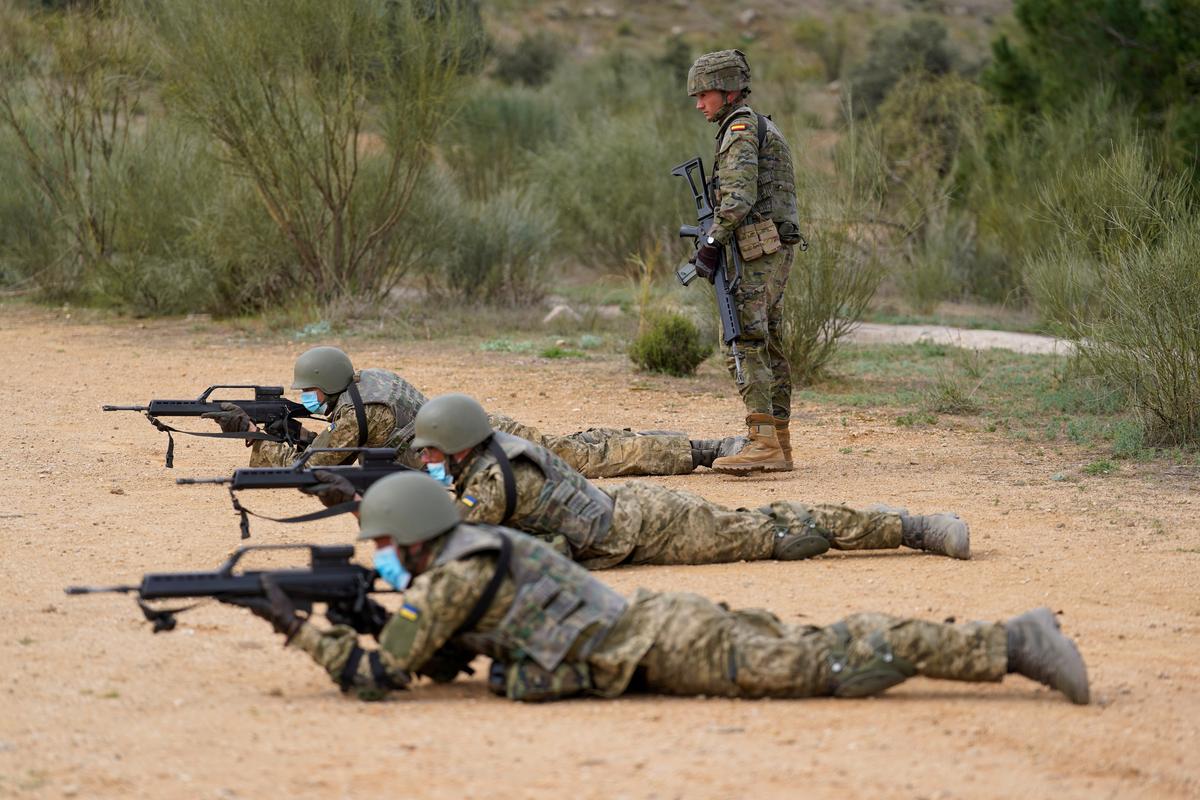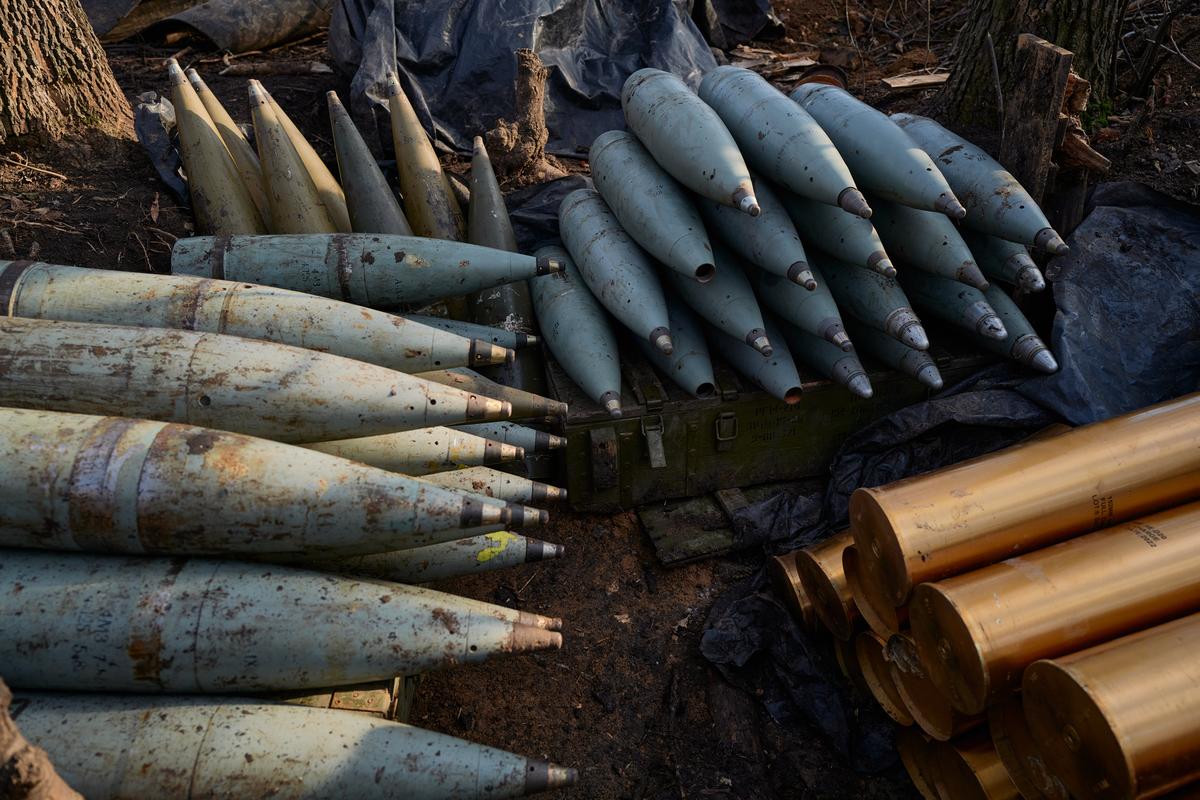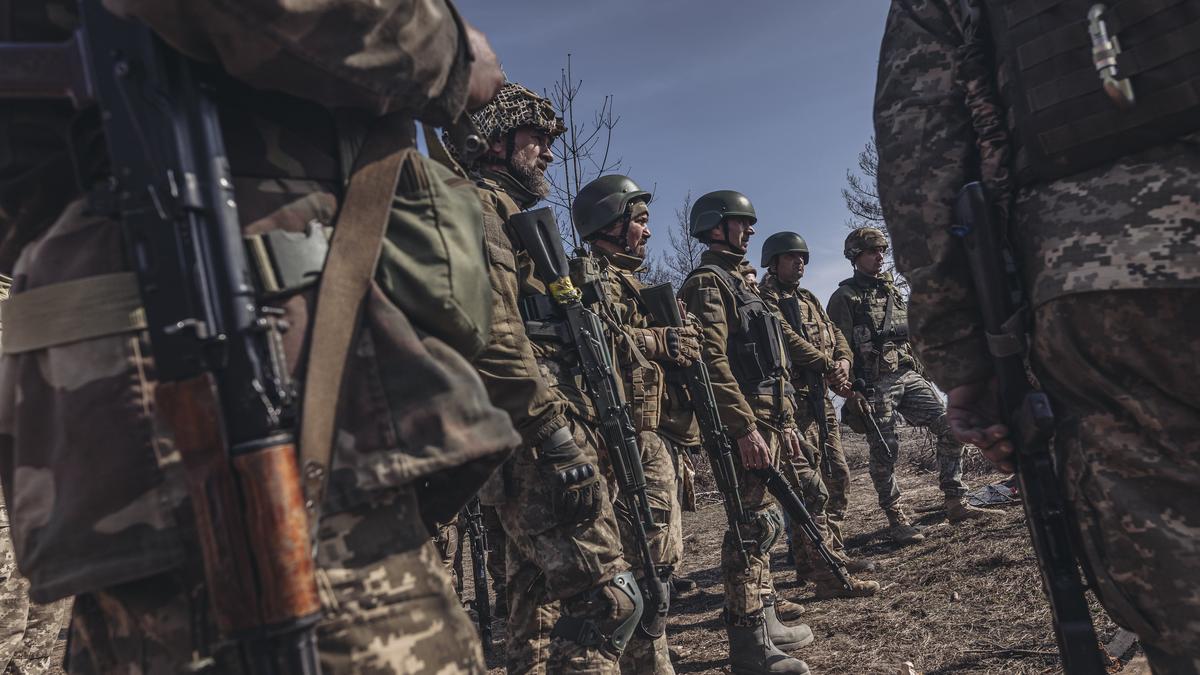After Russia’s stumbled offensive, Ukraine’s expected counteroffensive has become the biggest subject of debate in this war. Many experts are convinced that it is going to start in the near future, although President Volodymyr Zelensky argues that Ukraine’s military is not ready for action yet.
Novaya-Europe is looking into whether we should be expecting attacking operations from the Ukrainian troops anytime soon.
Waiting for the shells
Volodymyr Zelensky recently told the Japanese media outlet Yomiuri Shimbun that Ukraine cannot yet launch a counteroffensive due to a lack of weapons and munitions. “We are waiting for the munitions from our partners to arrive,” the Ukrainian president said. “We cannot start [the counteroffensive] yet.” Zelensky also added that Russia was using three times more munitions daily than Ukraine. In addition to munitions, Ukraine is also expecting fighter jets from its allies, he says.
Assumptions that Ukraine lacks ammunition, as well as equipment and trained military, were previously expressed by some popular media. A much-talked-of article by The Washington Post stated that Ukraine’s military casualties could amount to 120,000 people since the start of the full-scale war. This led to a decrease in the effectiveness of Ukraine’s troops since there were almost no experienced fighters left on the front line. In addition, The Washington Post stated that the Ukrainian side faced an acute shortage of weapons, which its allies “have scrambled to address”. Those were the reasons the newspaper, citing Ukrainian officials and military bosses, doubted that Kyiv might launch a successful counteroffensive anytime soon.
“Ukraine’s Armed Forces obviously suffered heavy losses, including personnel,” Israeli military expert David Gendelman explains as he speaks to Novaya-Europe.
“This is an inevitable consequence of a big war. The same thing pertains to Russia. This, oddly enough, is ‘normal’; things could not have been any different in the current situation.”
Despite the terrible losses, many experts do not consider them decisive. “Even if we suppose that the figure of 120,000 killed and wounded Ukrainian soldiers given in the article is accurate, it does not mean any critical defeat,” Ukrainian military expert Roman Svitan has told Novaya-Europe. For each killed Ukrainian soldier, there are five wounded. So, we can see that there are 20,000 KIA and 100,000 wounded servicemen. At least half of those wounded ones, that is, 50,000, return to duty after treatment. So, things are not as bad as they might seem. A total of about 500,000 individuals were on the frontlines in Ukraine in these nine years. They are experienced and possess the necessary military skills. The potential of Ukraine’s armed forces is constantly increasing thanks to the new personnel that are replacing the exhausted units at the forefront through rotation.”
The expert says that after Ukraine’s allies had begun to massively train Ukrainian soldiers, the quality of their military skills increased significantly.
“According to the available data, three army corps were supposed to be prepared (one corps in this case is about 20 thousand fighters — editor’s note). However, some part of those was used for defence, so perhaps there are two corps ready,” says David Gendelman. “But this is a dynamic parameter, the training continues and the offensive is not scheduled for today, so we’ll see how many soldiers will be prepared when it starts.”
Roman Svitan agrees with these estimates. According to his data, about 50,000-60,000 Ukrainian servicemen have already completed or are currently undergoing training abroad. They are being trained at dozens of grounds in the US, the UK, Poland, Germany, and other NATO countries. This process became especially intensive after the decision had been made to provide Kyiv with heavy equipment. Returning to Ukraine, soldiers and officers are involved in operational coordination. It is these units that will form the backbone of Ukraine’s offensive forces, using weapons supplied by the West, the expert believes.

Ukrainian military during training in Toledo, Spain, 24 March 2023. Photo: Paul Hanna / Bloomberg / Getty Images
Five hundred tanks
All the equipment the West promised to provide Ukraine with is already entering service with Ukraine’s Armed Forces, Roman Svitan says. The equipment in question is tanks, infantry fighting vehicles, artillery, and MLRS. The expert believes that the total number of tanks provided by the allies, including both Western and Soviet models, might be up to five hundred. If we add up armoured personnel carriers and infantry fighting vehicles, the total number of armoured vehicles in Ukraine’s possession will be over one thousand.
“Speaking about the equipment, I assume that it will be kept under some sort of ‘umbrella’ on the territory of our NATO partners or away from the front line for as long as possible in order to save it from the enemy’s attacks,” says Roman Svitan. “The main forces will begin to pull up by the time of a large-scale frontline breakthrough. When this happens, all vehicles will be controlled by well-trained crews.”
Over a million shells
It was revealed recently that the EU member states would supply Ukraine with 1 million 155 mm NATO-standard artillery shells in the coming year. Estonia’s Defence Minister Hanno Pevkur spoke about this following the meeting of European ministers in Brussels.
“The issue of ammunition, especially artillery shells, is critical for the continuing war in general and Ukraine’s planned offensive in particular,” David Gendelman says. “Therefore, Ukraine’s Defence Minister Oleksiy Reznikov has repeatedly emphasised this issue, including at Ramstein, and this is why European countries have adopted a plan to increase the production and supply of ammunition worth €2 billion in total.”
EU High Representative for Foreign Affairs and Security Policy Josep Borrell proposed a three-stage plan to support Ukraine and increase the defence capability of Europe. To do this, the pan-European peace fund will additionally need to allocate €1 billion to help Ukraine purchase its ammunition. Another €1 billion will be required to replenish the coalition’s own reserves. Stage three will be the development of the defence industry in European countries.
“For each 5,000 shells fired by Ukraine’s Armed Forces every day now, there are approximately 15,000–20,000 rounds of Russian artillery,” says Roman Svitan. “Last summer, this ratio was 1 to 10 when Russia spent up to 50-60 thousand shells per day.
The situation will change when the one million 155 mm shells are provided to Ukraine by the European Union. Moreover, the majority of those will arrive immediately from warehouses that will be restocked using the adopted program.
Additionally, the US, the UK, and countries outside Europe will also do their part. This will allow the Ukrainian military to spend 10-15 thousand shells daily during a three-months offensive, enough to break through the enemy’s defence and defeat Russia. I assume that the transfer of shells and equipment takes the probable density of hostilities during the de-occupation of the Kherson, Zaporizhzhia, and Crimea regions into account. It will take about the same amount of ammunition to liberate the Donetsk and Luhansk regions.”
David Gendelman is certain that the schedule for future deliveries of ammunition and weapons is on the table of the Ukrainian military-political leadership, and these figures will be the determining factor for launching Ukraine’s offensive. “If all the promised weapons arrive in the next month or two,” the Israeli expert says, “this would theoretically be enough to launch an offensive using the newly trained reserve corps.”

Photo: Pierre Crom / Getty Images
A lot of blood
Ukraine has already started preparations for offensive action, Roman Svitan believes. Reconnaissance and combat operations have been ongoing in the Kherson and Zaporizhzhia directions for about a week. Artillery, MLRS and UAVs of Ukraine’s Armed Forces cover the entire depth of the Russian defence up to the Sea of Azov coast. Typically, such actions begin about a month before the start of a full-scale offensive. A serious offensive on the Russian positions is to be expected in mid-April.
Interestingly enough, the leader of PMC Wagner Yevgeny Prigozhin recently requested help from Russia’s General Staff, predicting a large-scale Ukrainian counteroffensive near Bakhmut with an attempt to cut off the “private” units from the main forces of the Russian military. A few days later, the commander of Ukraine’s Ground Forces Colonel General Oleksandr Syrskyi stated that the Russian units were suffering from significant losses and exhaustion.
“Soon enough we’re going to use this opportunity as we did it at Kyiv, Kharkiv, Balakliya, and Kupiansk earlier,” Syrskyi said.
Roman Svitan is certain that the major offensive will unfold in other directions, while Ukraine will only seek to encircle units of Russian mercenaries that advanced too deep into the Sloviansk direction, wiping out most of PMC’s units.
“There are a lot of old mountains and elevations in Donbas, so there is no point in attacking head-on. We are talking, among other things, about Donetsk, Luhansk and other cities in the region,” the Ukrainian expert says. “It is better to bypass and cut off fortified hills, forcing garrisons there to surrender or retreat.
I may assume that the main vectors of the offensive will go to Melitopol from Orikhiv, to Mariupol from Vuhledar, and from Nova Kakhovka to Armiansk.
Apparently, the option where the attacks will be most fruitful will become the priority, and this is where Ukraine will direct its reserves to expand its breakthrough. I am certain that we are talking about reaching the Sea of Azov coast; this might happen as early as this spring. If the offensive goes well, we may be clearing up Crimea in the summer. Autumn will be the time for Ukraine’s military to liberate Donbas. Attacking there while having Russian troops in the rear in Crimea is a mistake we had made before.”
Roman Svitan describes the Donbas liberation operation the following way: from Svatove, a blow will be delivered in the direction of Luhansk, and from there Ukraine’s military will go along the banks of the Siverskyi Donets River until it flows into the Don already within the borders of Russia and further to Rostov-on-Don, completely cutting off Donbas from Russia. Since Russia’s Constitution implies that the Ukrainian military is already on the Russian territory, penetrating into Russia proper will not be a major political issue, our expert believes. “After the Russians are pushed into their territory, we will retreat to the state border,” Roman Svitan says. “Although this plan looks very optimistic, we understand that its implementation will be paid for with a lot of blood. Many people will lose their lives down this road, but Ukraine has no other option.”
Join us in rebuilding Novaya Gazeta Europe
The Russian government has banned independent media. We were forced to leave our country in order to keep doing our job, telling our readers about what is going on Russia, Ukraine and Europe.
We will continue fighting against warfare and dictatorship. We believe that freedom of speech is the most efficient antidote against tyranny. Support us financially to help us fight for peace and freedom.
By clicking the Support button, you agree to the processing of your personal data.
To cancel a regular donation, please write to [email protected]

